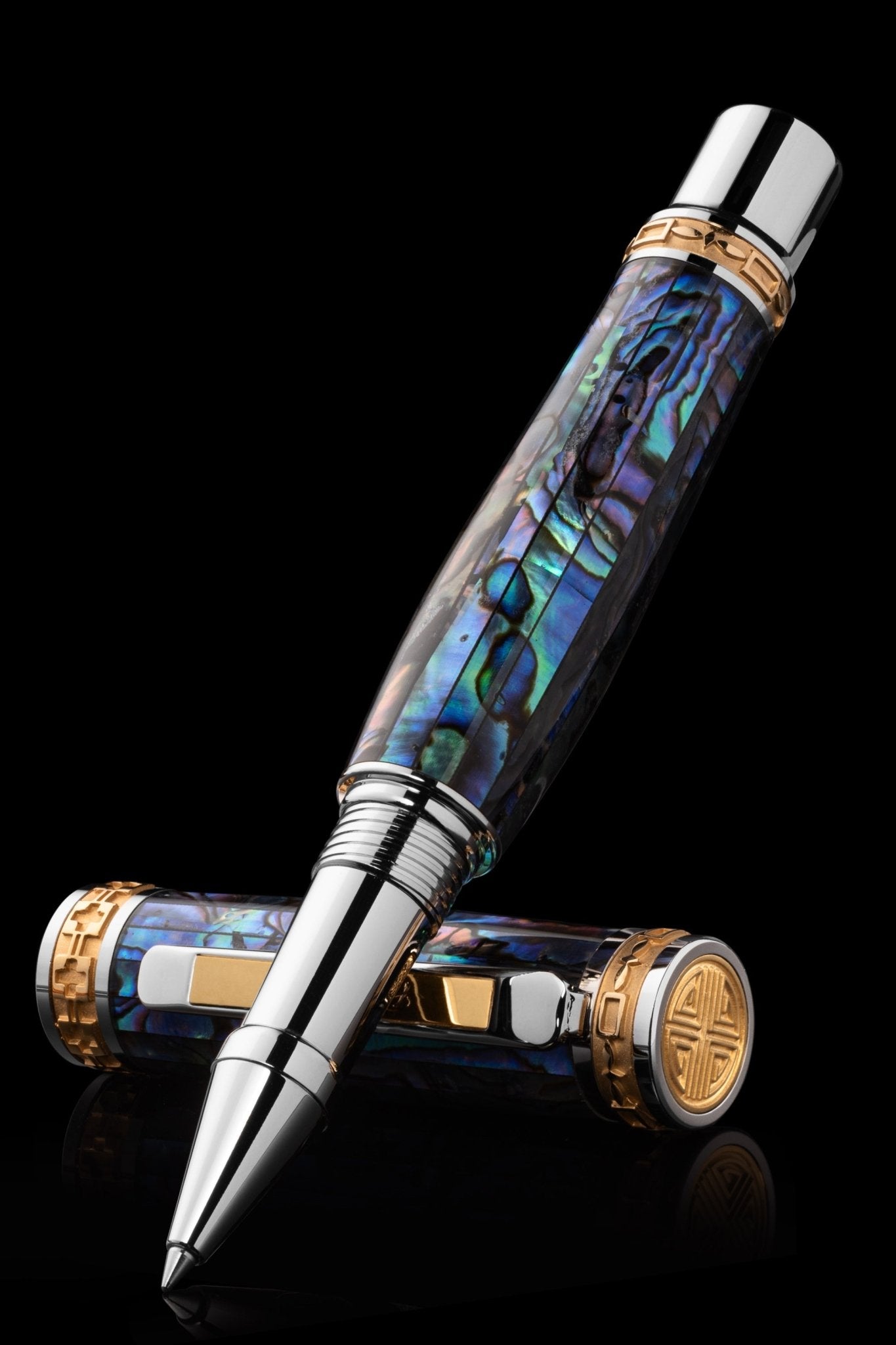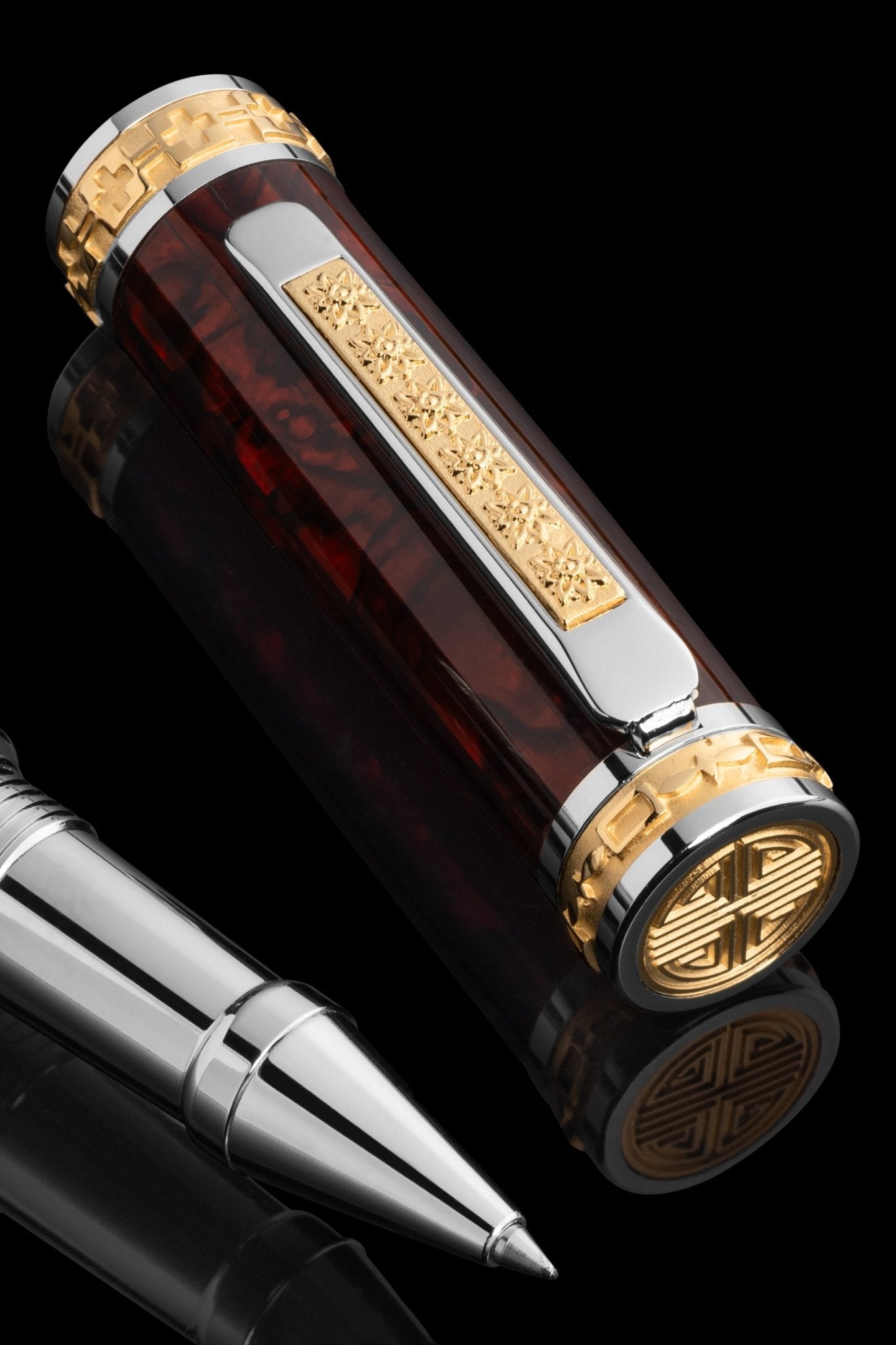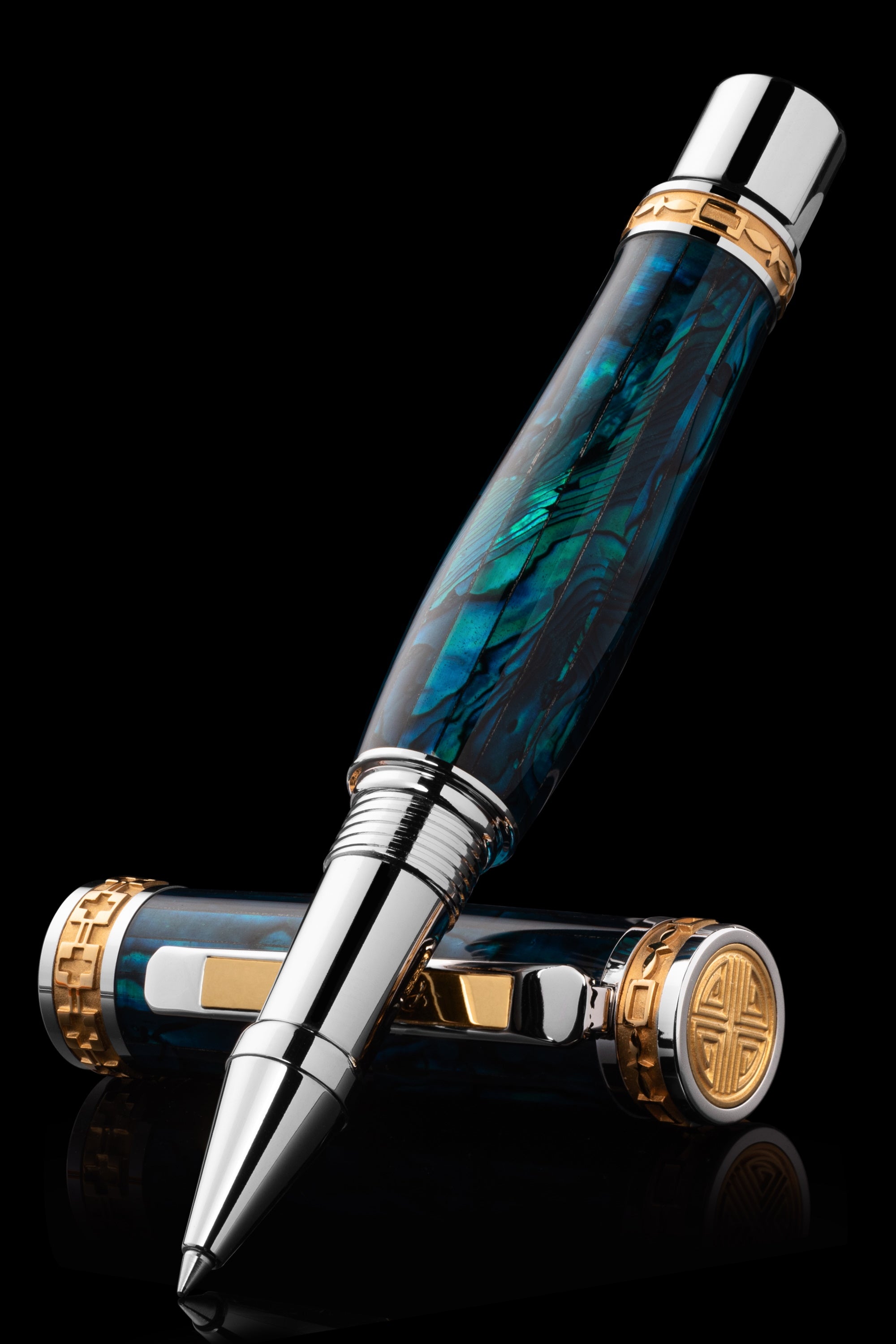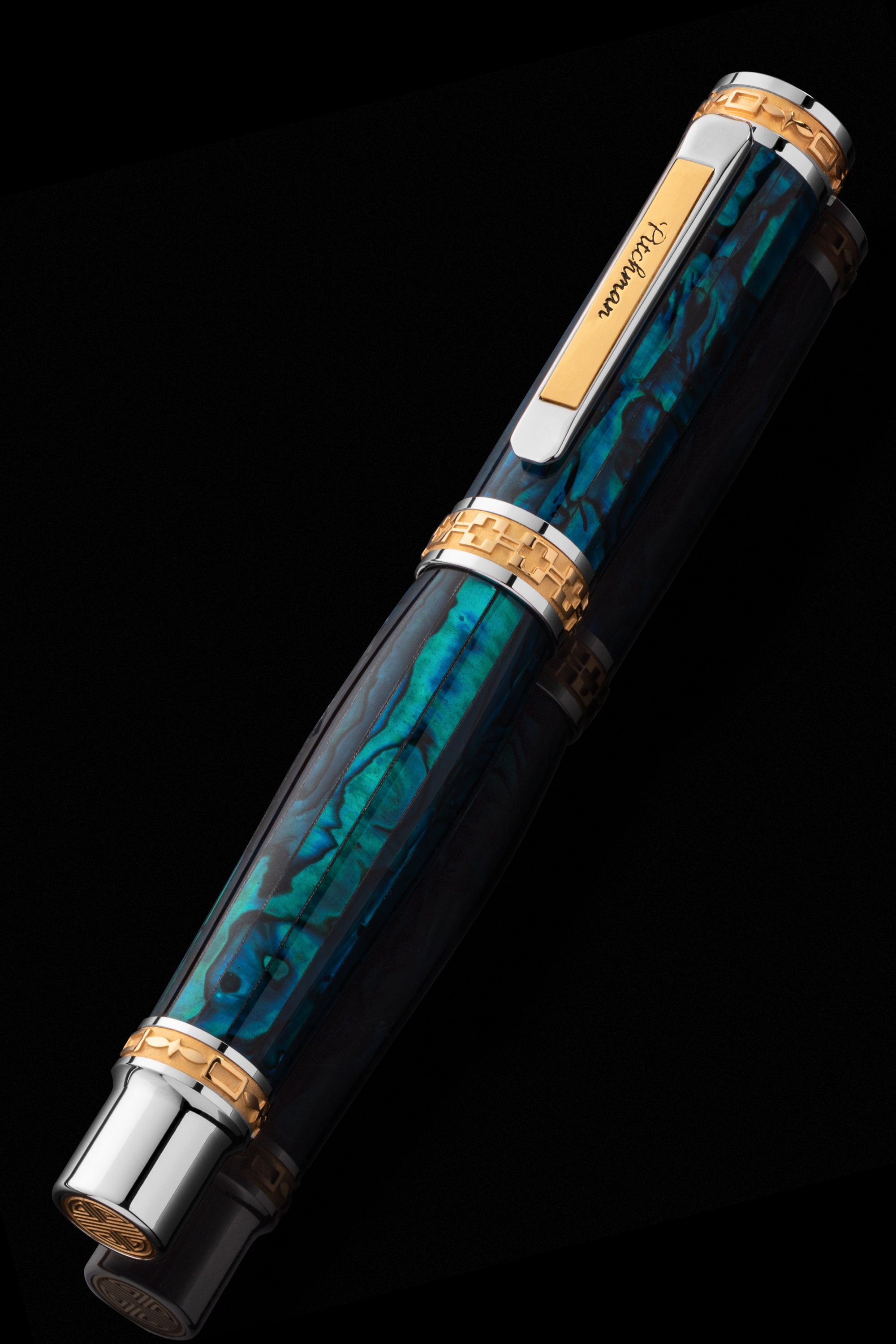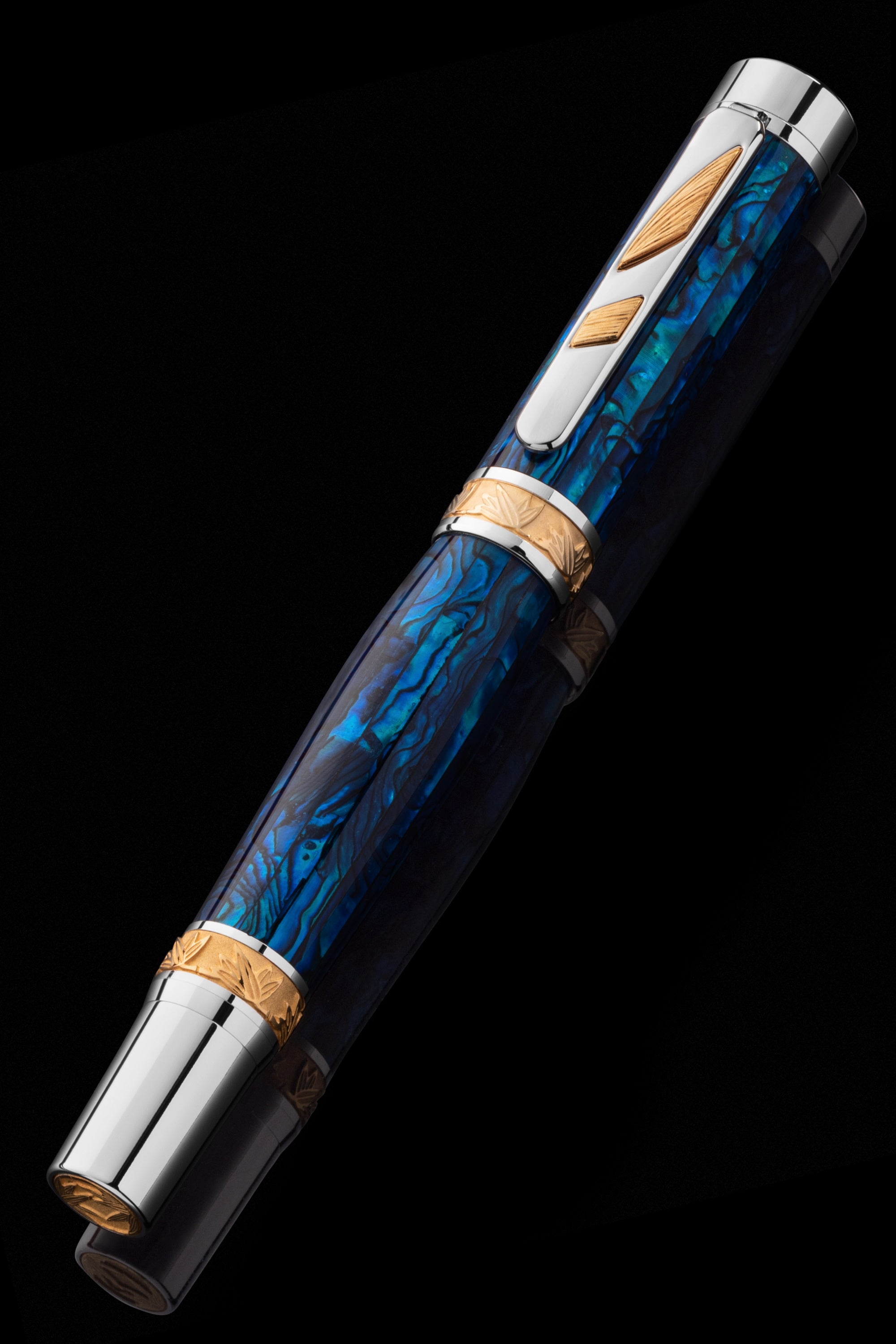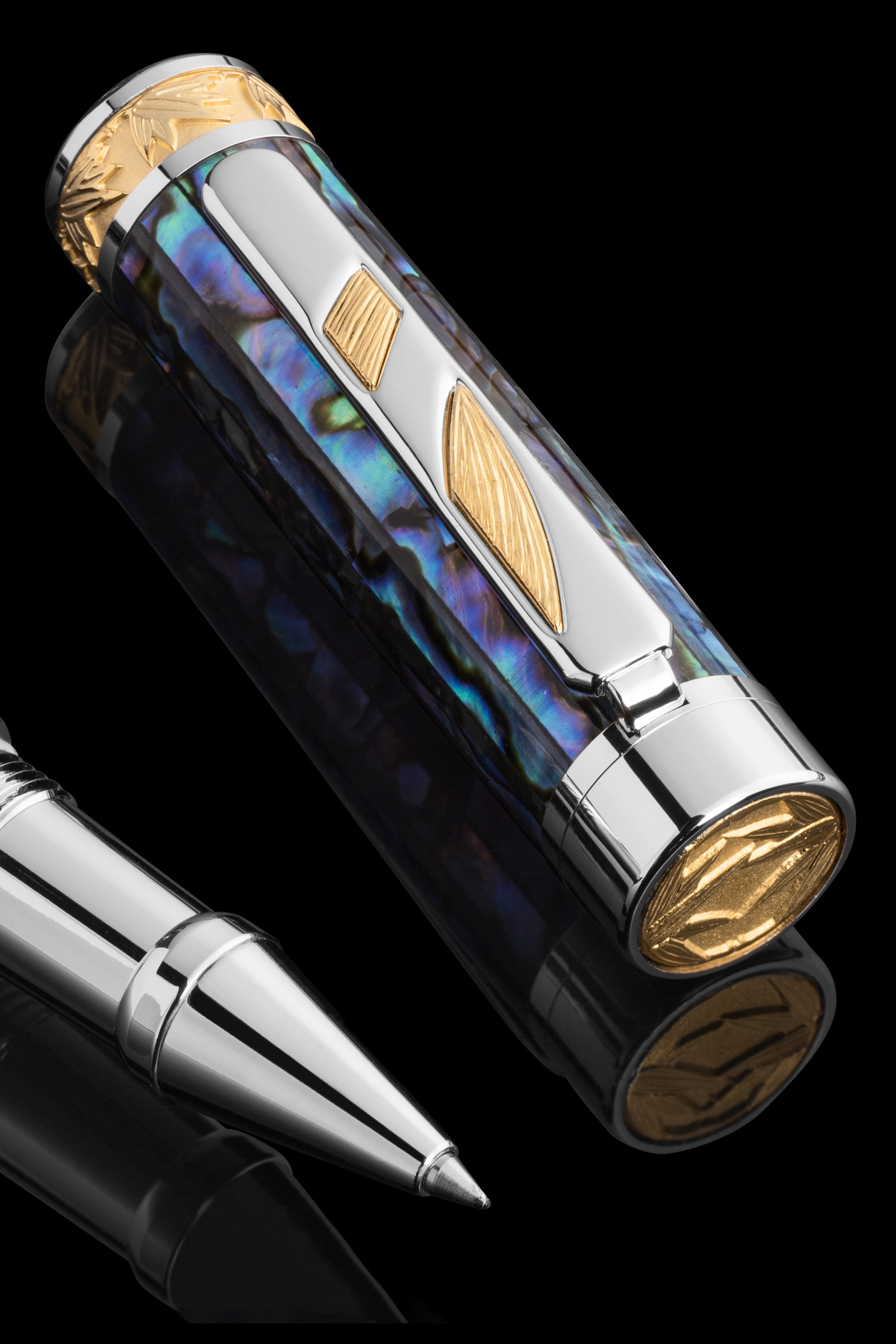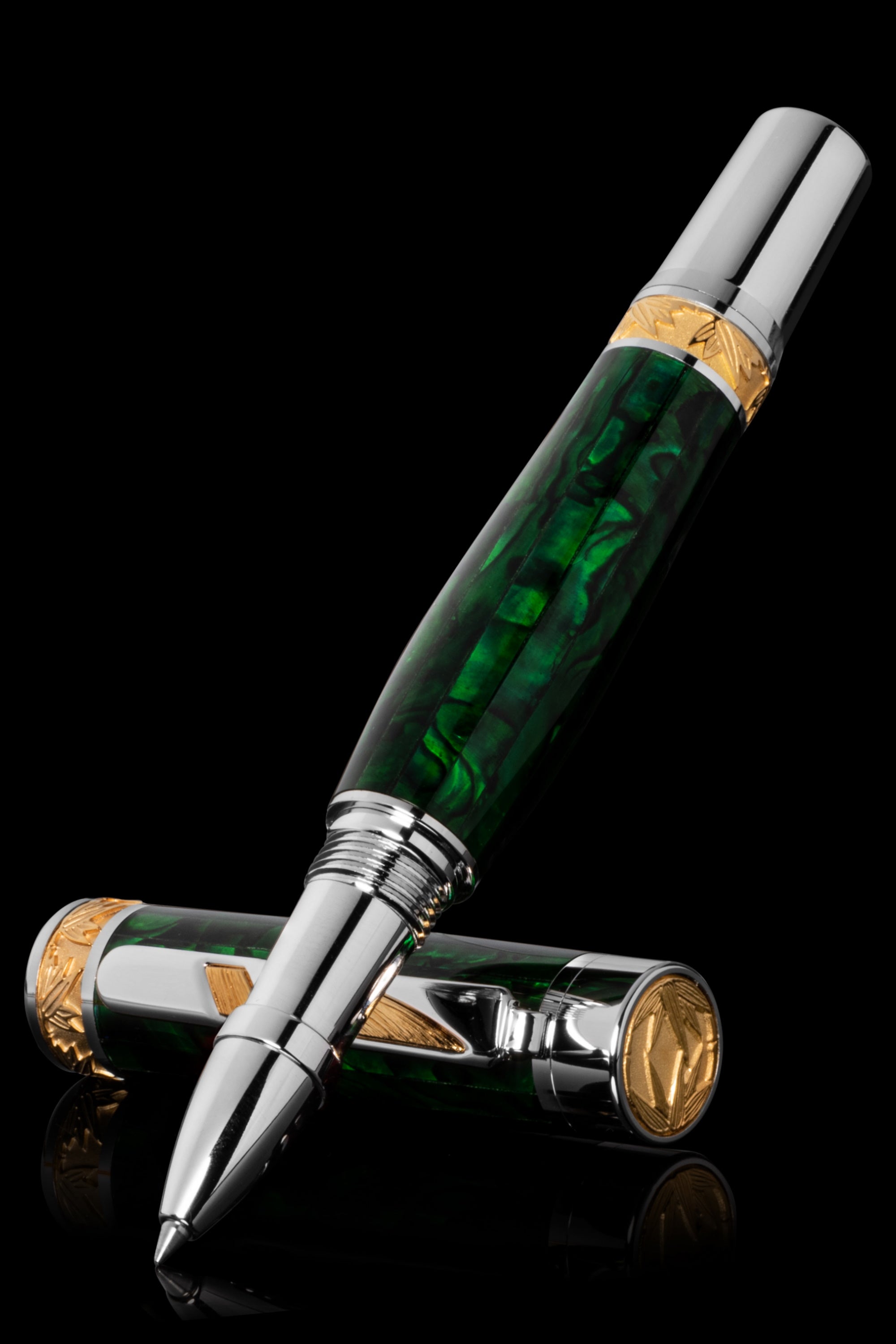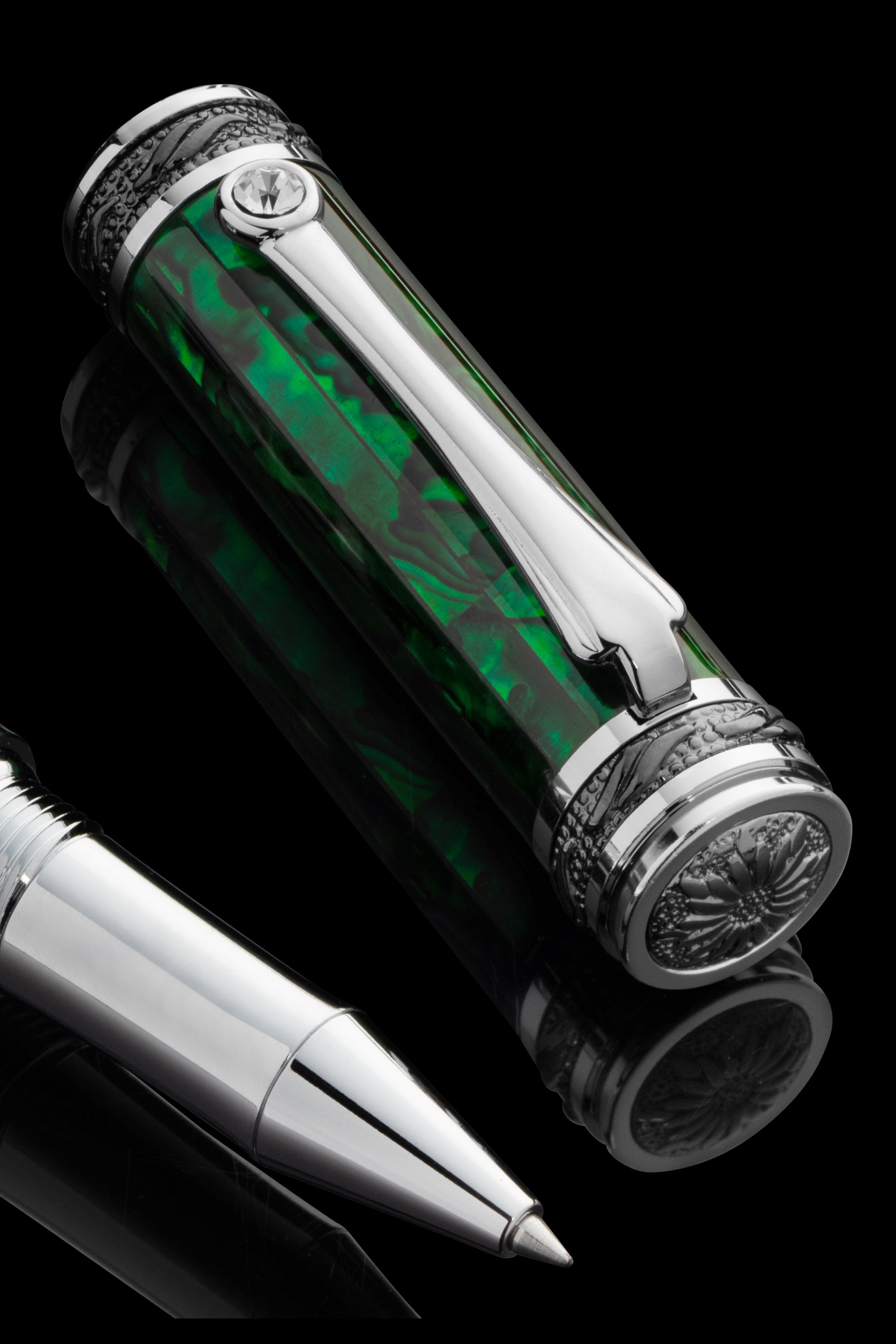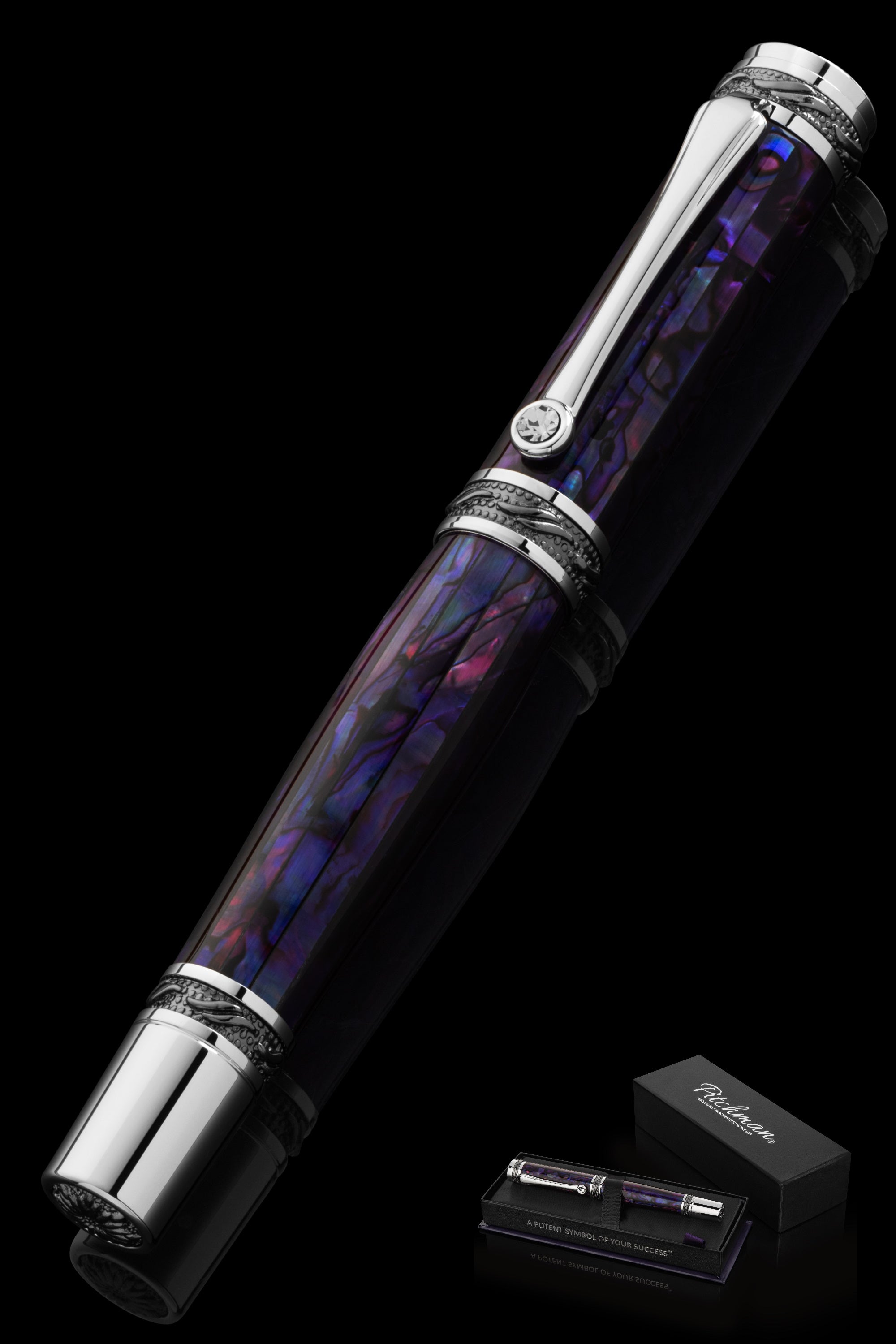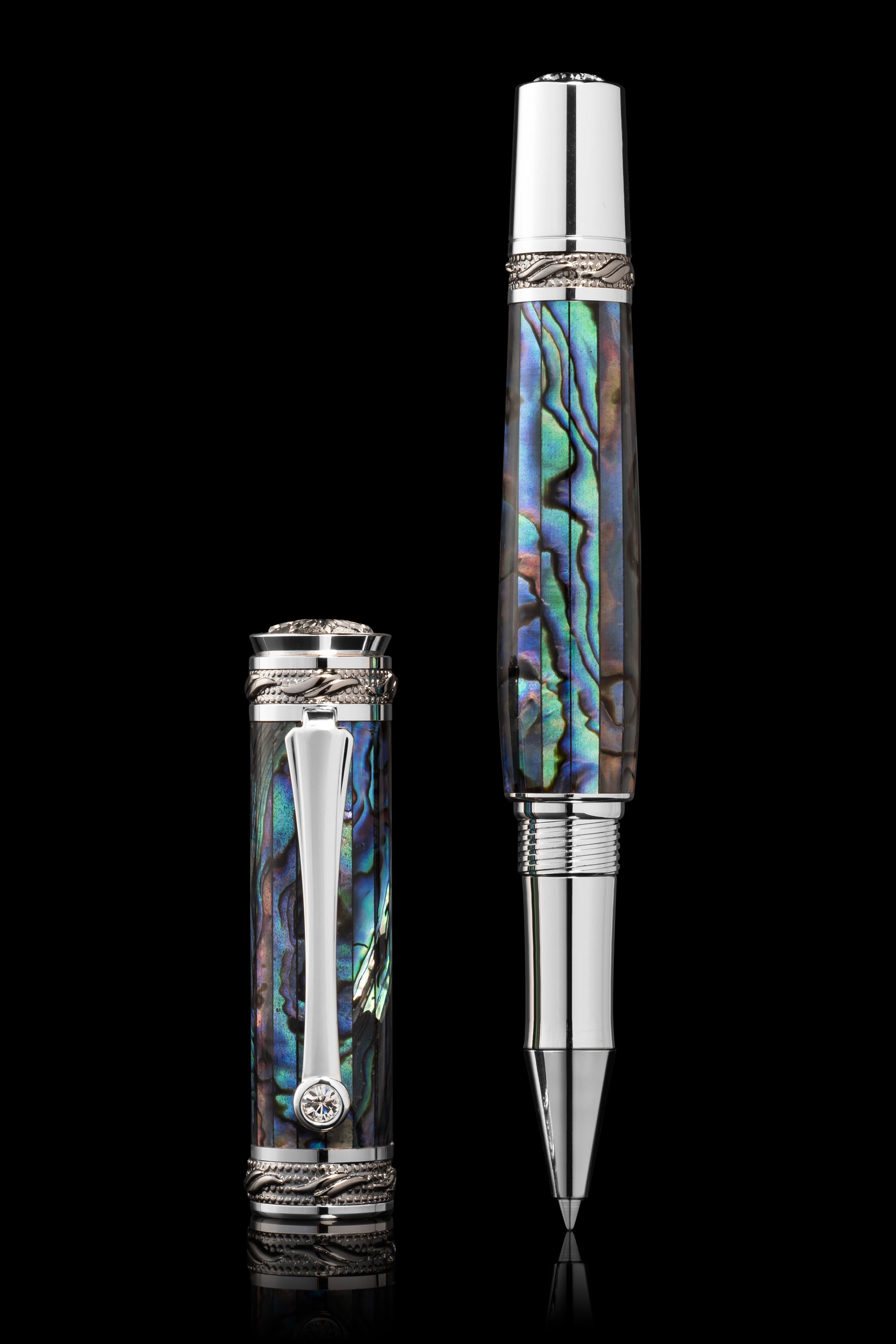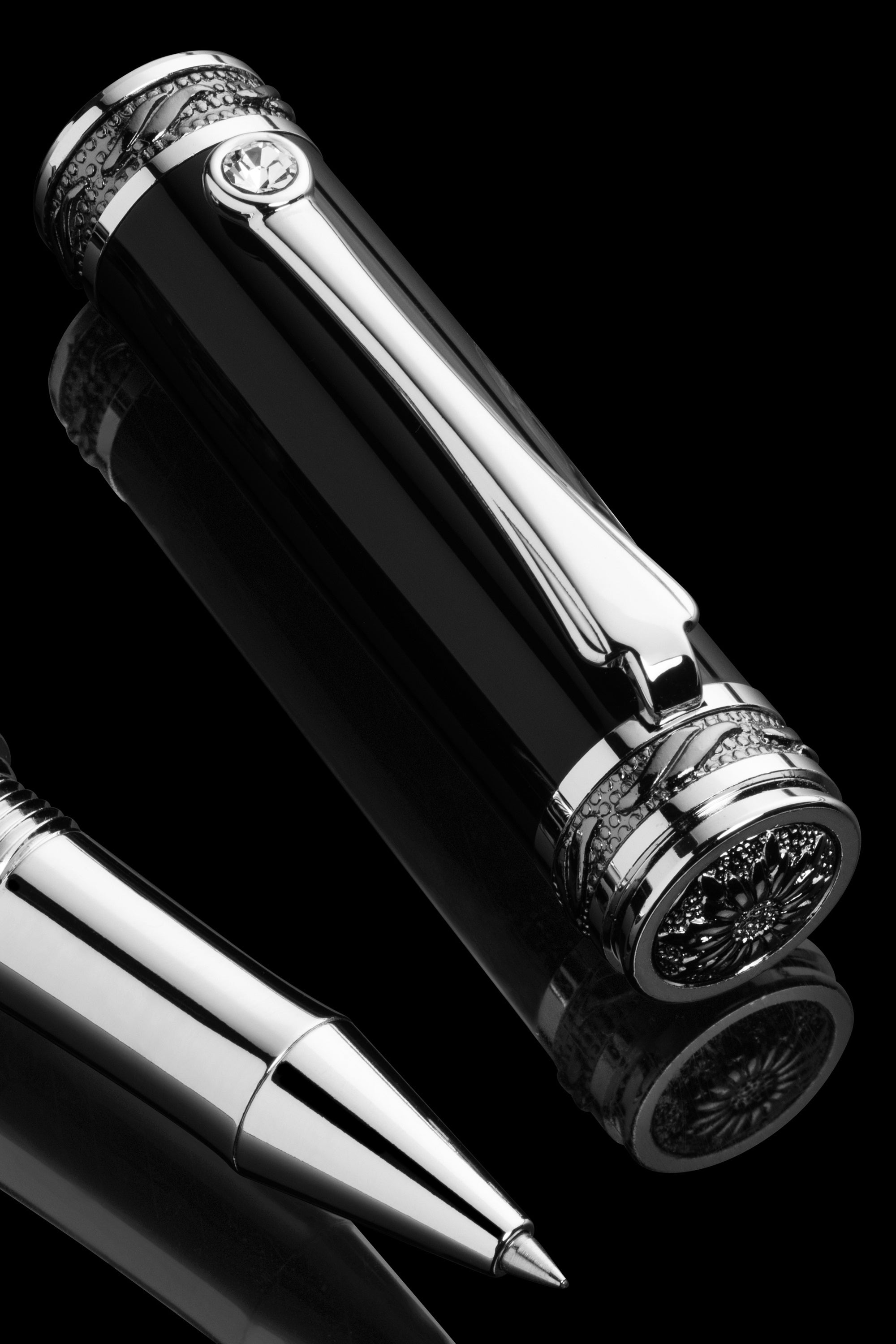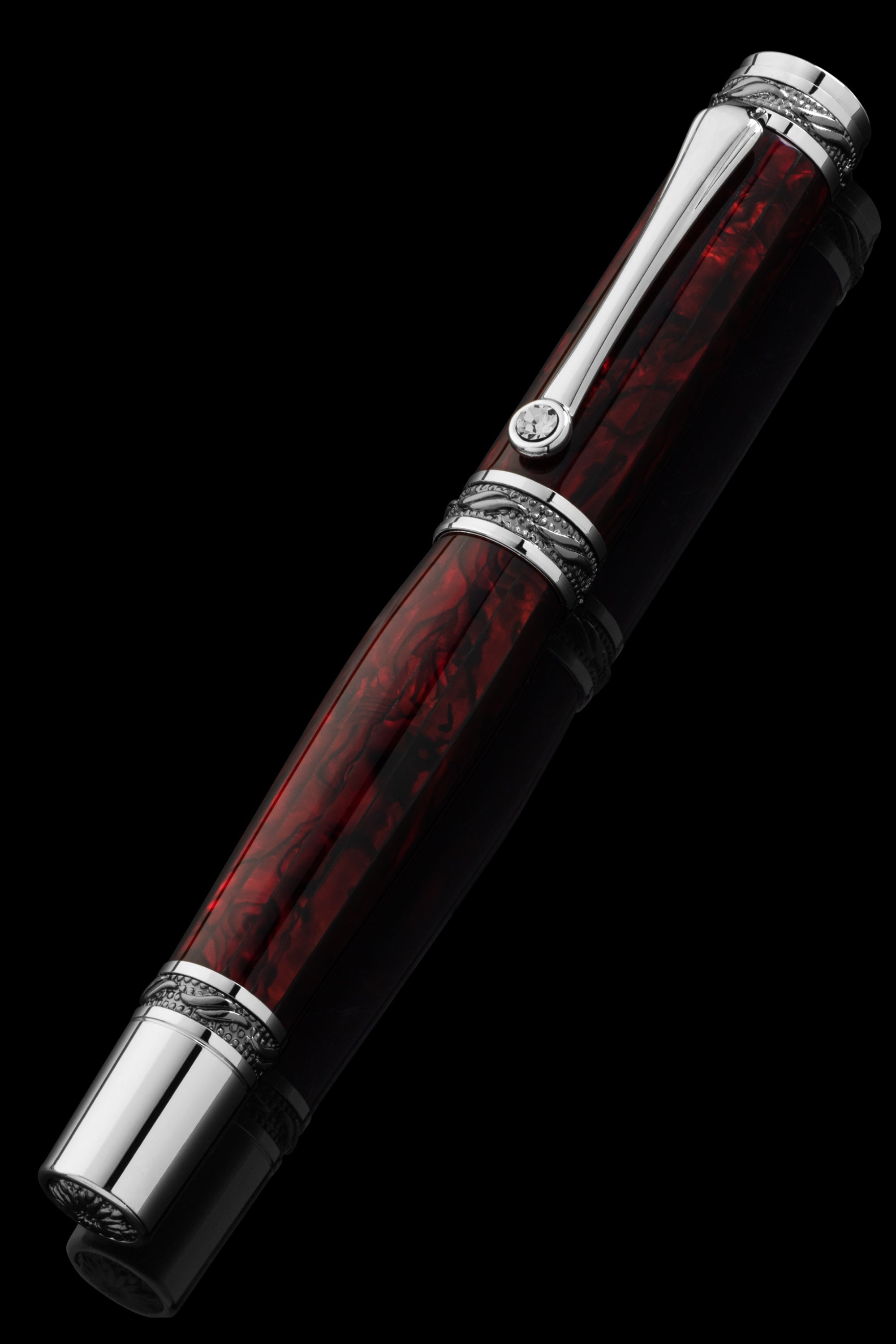Explore All Our Collections
Closer | Rainmaker | Tycoon
Closer
Closer LUXE White Mother of Pearl Rollerball Pen
Closer LUXE Pink Abalone Shell Rollerball Pen
Closer LUXE Sapphire Abalone Shell Rollerball Pen
Closer Blue Abalone Shell Rollerball Pen
Closer Purple Abalone Shell Rollerball Pen
Closer Emerald Abalone Shell Rollerball Pen
Closer Red Abalone Shell Rollerball Pen
Closer Teal Abalone Shell Rollerball Pen
About Pitchman
Pitchman stands as a leader in the handcrafted luxury pen market, meticulously producing 2,000 exquisite writing instruments each year. Our pens are cherished by customers across the globe, representing a hallmark of elegance and craftsmanship.

Rainmaker
Rainmaker White Mother of Pearl Rollerball Pen
Rainmaker Sapphire Abalone Shell Rollerball Pen
Rainmaker Black Rollerball Pen
Rainmaker Blue Abalone Shell Rollerball Pen
Rainmaker Purple Abalone Shell Rollerball Pen
Rainmaker Emerald Abalone Shell Rollerball Pen
Rainmaker Red Abalone Shell Rollerball Pen
See how our writing instruments inspire.
Words of praise from those who know craftsmanship.
"Your pens were a big hit with
our clients, and one of them proudly sits on my desk. Not only is it a luxurious piece, but the writing experience is absolutely incredible :-)I’ve tried pens from various luxury brands like
— Peter StiavnickyBratislava, Slovakia
S.T. Dupont, Montblanc, Waterman, and Montegrappa, but hands down, yours are the best!"
Tycoon
Tycoon Lustrous Tan Abalone Shell Rollerball Pen
Tycoon Lustrous Black Rollerball Pen
Tycoon Lustrous Red Abalone Shell Rollerball Pen

Complimentary Premium Gift Wrapping
Great gifts must deliver a complete experience from moment one. That's why we deliver your new Pitchman in our exclusive signature gift wrapping and embossed with the Pitchman logo in real sealing wax.
Unique Fountain Pens
The Allure of Unique Fountain Pens: A Journey through History and Collectability
In an age dominated by digital communication, the fountain pen remains a symbol of elegance, craftsmanship, and personal expression. Among the vast array of writing instruments, unique fountain pens hold a special place for collectors and enthusiasts alike. This article delves into the captivating world of fountain pens, with a spotlight on Pitchman, renowned for creating the most unique fountain pens. We'll explore the history of famous manufacturers, the reasons behind the collectability of unique fountain pens, and what makes Pitchman a standout brand in this distinguished field.
A Brief History of Fountain Pens
The Origins
The evolution of writing instruments began with the reed pens of ancient Egypt, progressing through the quills of medieval Europe, and culminating in the development of the modern fountain pen in the 19th century. The need for a more efficient writing tool led to the invention of the fountain pen, which combined a reservoir for ink with a nib for smooth writing.
Landmark Innovations
In the early 20th century, several companies revolutionized the fountain pen industry with their innovative designs and reliable mechanisms. Among these pioneers were Waterman, Parker, and Sheaffer in the United States, and Conway Stewart in the United Kingdom. Each of these brands brought unique advancements to the market:
Waterman: Founded in 1884 by Lewis Edson Waterman, the company introduced the first practical fountain pen with a capillary feed, which prevented ink from leaking.
Parker: Established in 1888 by George Safford Parker, this brand became famous for its Parker Duofold and the iconic Parker 51, renowned for its sleek design and reliability.
Sheaffer: Walter A. Sheaffer patented the lever-filling system in 1908, which allowed for easier ink refilling and set new standards for fountain pen design.
Conway Stewart: A British manufacturer founded in 1905, known for its beautifully crafted pens and vibrant celluloid finishes.
The Golden Age

The period between the 1920s and 1950s is often referred to as the golden age of fountain pens. During this time, manufacturers experimented with various materials, colors, and designs, resulting in a plethora of collectible and unique models. The craftsmanship and artistry of this era continue to inspire contemporary fountain pen makers.
The Collectability of Unique Fountain Pens
What Makes a Fountain Pen Unique?
Several factors contribute to the uniqueness and collectability of fountain pens:
Design and Craftsmanship: Pens with intricate designs, hand-engraved details, and high-quality materials such as gold, silver, palladium, abalone shell, mother of pearl, diamonds, and resins are highly sought after.
Historical Significance: Pens associated with notable events or personalities, or those representing significant technological advancements, hold special value.
Limited Editions: Pens produced in limited quantities or special editions often become coveted collectibles due to their rarity.
Brand Reputation: The legacy and reputation of the manufacturer play a significant role in the desirability of a fountain pen.
Collecting Fountain Pens
Collecting fountain pens is more than a hobby; it is a passion that combines appreciation for art, history, and engineering. Enthusiasts often seek out pens from specific eras, different countries, brands, or with particular design features. The market for vintage and unique fountain pens is vibrant, with auctions, pen shows, and online communities providing platforms for collectors to share their finds and knowledge.
The Role of Pitchman in Modern Collectability
Pitchman has carved out a niche in the contemporary fountain pen market by focusing on creating the most unique and artistically crafted pens. Their dedication to quality and innovation has earned them a loyal following among collectors and writers alike.
Pitchman: Masters of Unique Fountain Pens
Craftsmanship and Innovation

Pitchman is celebrated for its meticulous craftsmanship and innovative designs. Each Pitchman pen is a work of art, created with attention to detail that rivals the masterpieces of the golden age. The brand uses a blend of traditional techniques and modern technology to produce pens that are both functional and aesthetically pleasing.
Signature Collections
Pitchman's signature collections showcase the brand's commitment to uniqueness and excellence. Some of their notable collections include:
Why Pitchman Stands Out
Several factors set Pitchman apart in the world of unique fountain pens:
Exclusivity: By producing limited quantities of each design, Pitchman ensures that their pens remain exclusive and collectible. Production is limited to 2,000 annually.
Quality Materials: Pitchman uses only the finest materials, including precious metals, exotic abalone and mother of pearl, and high-grade resins, ensuring durability and luxury.
In Conclusion
Unique fountain pens represent more than just writing instruments; they are symbols of craftsmanship, history, and personal expression. The rich legacy of fountain pen manufacturing, from the innovations of Waterman and Parker to the artistic creations of Conway Stewart and Sheaffer, provides a fascinating backdrop for today's collectors.
In this distinguished lineage, Pitchman stands out as a beacon of modern excellence. Their dedication to creating the most unique fountain pens, coupled with their use of high-quality materials and innovative designs, has solidified their reputation among enthusiasts in the United States, the United Kingdom, and beyond.
Whether you are a seasoned collector or a newcomer to the world of fountain pens, the allure of a unique fountain pen is undeniable. It is a piece of history, a work of art, and a tool that transforms the act of writing into an experience of elegance and distinction.
Book an appointment now, and our staff will contact you to arrange your consultation session. If you are new to luxury pens, we can help you identify the perfect pen to suit any occasion or person type. Confused between a rollerball and a fountain pen, we got you there too. We are here to help, so don't hesitate to contact us today for your no-pressure, free consultation.













